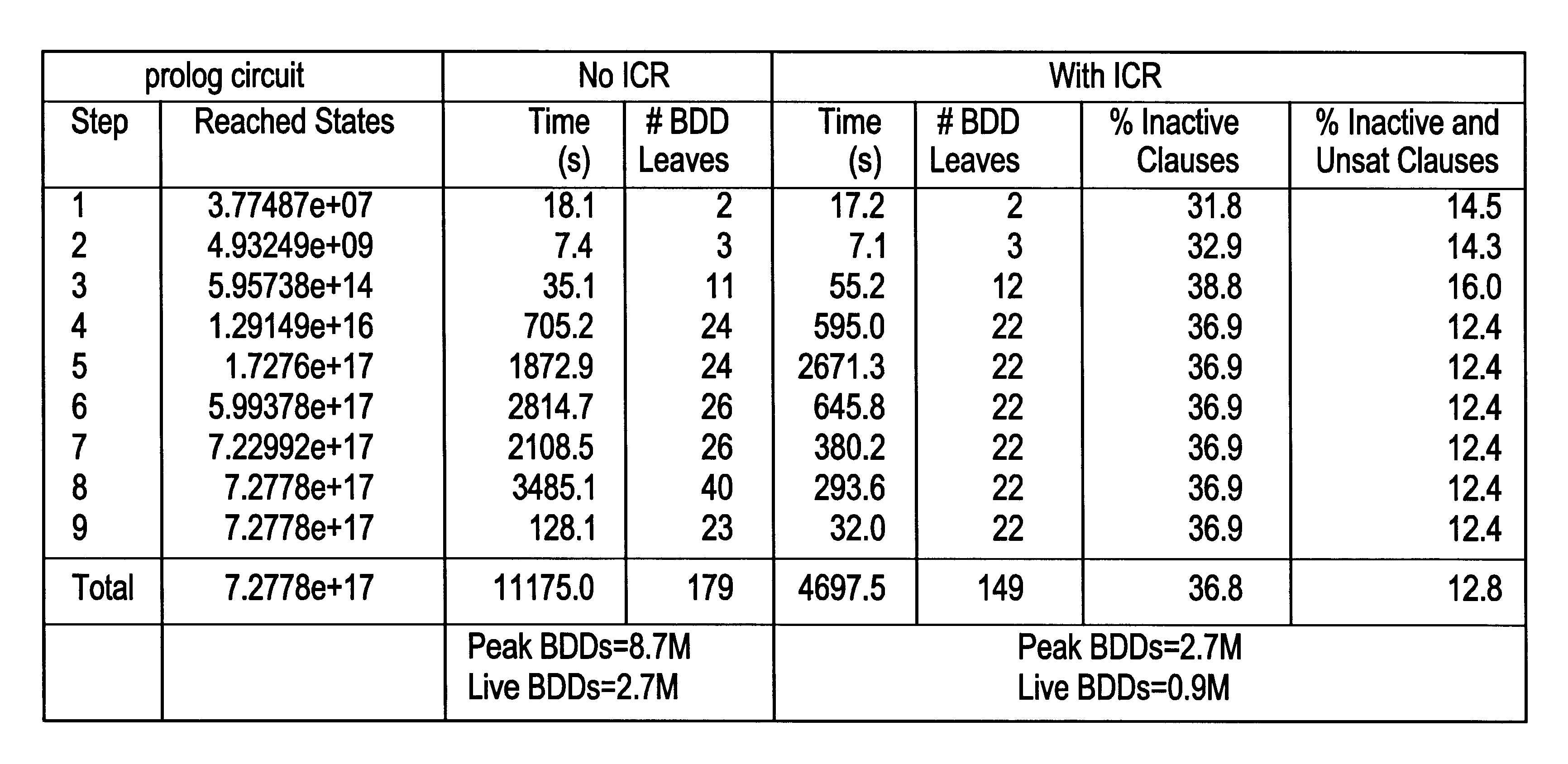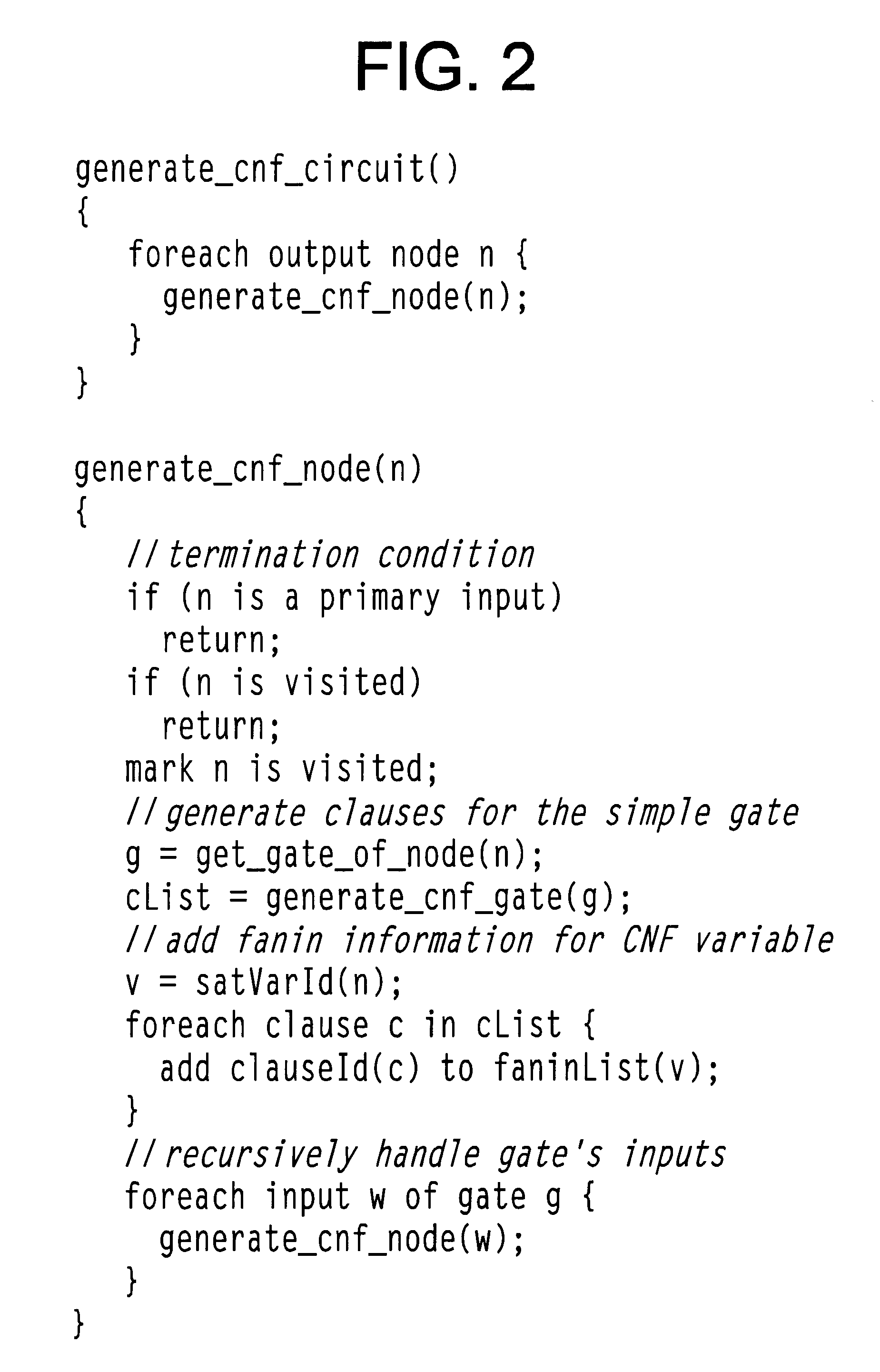Dynamic detection and removal of inactive clauses in SAT with application in image computation
a technology of inactive clauses and dynamic detection, applied in the field of dynamic detection and removal of inactive clauses in sat with application in image computation, can solve the problems of high effort required for detection of dominating clauses, properties that have not been exploited in conventional sat packages, and no explicit removal of inactive regions
- Summary
- Abstract
- Description
- Claims
- Application Information
AI Technical Summary
Problems solved by technology
Method used
Image
Examples
Embodiment Construction
Overview of Embodiments
The disclosed optimization technique for reducing the size of SAT sub-problems uses the notion of unobservability for the dynamic detection and removal of inactive clauses. Inactive clauses are defined as clauses which do not affect the SAT solutions of interest. Rather than perform the analysis on the circuit structure, the disclosed optimization technique works directly on the CNF (Conjunctive Normal Form) description of the circuit. Since, typical SAT solvers use a CNF description of the problem, this avoids the overhead of multiple representations.
The variables and clauses of a CNF description are tagged with circuit connectivity information. The tagging is done only once, which is at the time of generating the CNF description from the circuit structure. Later, the tagging information is used repeatedly in the inner loop of a typical Davis-Putnam style branch-and-bound SAT algorithm to perform a backward traversal in order to remove inactive clauses. Backg...
PUM
 Login to View More
Login to View More Abstract
Description
Claims
Application Information
 Login to View More
Login to View More - R&D
- Intellectual Property
- Life Sciences
- Materials
- Tech Scout
- Unparalleled Data Quality
- Higher Quality Content
- 60% Fewer Hallucinations
Browse by: Latest US Patents, China's latest patents, Technical Efficacy Thesaurus, Application Domain, Technology Topic, Popular Technical Reports.
© 2025 PatSnap. All rights reserved.Legal|Privacy policy|Modern Slavery Act Transparency Statement|Sitemap|About US| Contact US: help@patsnap.com



